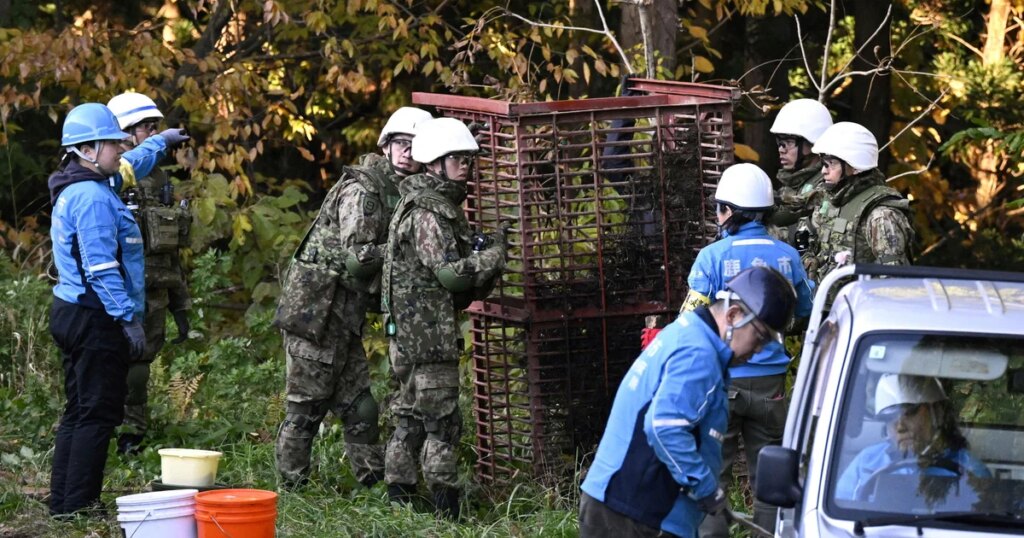In recent weeks, Japan has faced an alarming surge in bear attacks, particularly in the northern prefecture of Akita. The Defense Ministry has dispatched troops to aid local authorities in managing this crisis. The attacks, attributed to various factors including an aging population and a decline in rural dwelling activity, have resulted in significant casualties and raised questions about wildlife management in the area.
| Article Subheadings |
|---|
| 1) Overview of Recent Bear Attacks |
| 2) Government Response and Troop Deployment |
| 3) Current Situation in Akita Prefecture |
| 4) Underlying Factors Behind the Surge |
| 5) Future Measures and Wildlife Management |
Overview of Recent Bear Attacks
Japan has been grappling with a dramatic increase in bear attacks, particularly in rural areas. Since April, there have been over 100 casualties linked to these incidents, leading to 12 fatalities, which is the highest in a single fiscal year since records began in 2006. These figures raise urgent concerns about public safety as bears continue to encroach upon residential areas, presenting a growing threat to communities in the affected regions.
The attacks have been reported in various proximate locations—near schools, train stations, supermarkets, and even popular tourist spots like hot springs resorts. The phenomenon is particularly pronounced in northern Japan, where bear sightings have become alarmingly routine.
Government Response and Troop Deployment
In response to this escalating crisis, the Japan Defense Ministry dispatched troops to Akita Prefecture, signing an agreement that allows soldiers to perform specific operations like setting traps, aiding local hunters, and even managing the disposal of bears in affected areas. Remarkably, the troops are not authorized to use firearms, a decision made by the authorities in order to adhere to protocols and prioritize safety.
The agreement signed on Wednesday signifies a critical collaboration between the Defense Ministry and Akita officials, resembling a coordinated effort to curb the threat posed by these wild animals. Deputy Chief Cabinet Secretary Fumitoshi Sato emphasized the urgency of the situation, stating, “Responses to the bear problem are an urgent matter,” highlighting the severity of the bear incursions into populated regions.
Current Situation in Akita Prefecture
As of now, Akita Prefecture, home to approximately 880,000 residents, has reported over 50 bear attacks since May, resulting in at least four deaths. The attacks have become so frequent that “every day, bears intrude into residential areas,” as noted by officials. An elderly woman who was mushroom-hunting and another working on a farm both lost their lives in separate bear encounters, further accentuating the social panic surrounding this issue.
Local officials have described the situation as “desperate,” citing a significant lack of manpower to deal with the ongoing crisis. It’s evident that local hunters, who traditionally help in controlling bear populations, are aging and less experienced, complicating the matter. As bears increasingly venture into human territories, the risks to public safety continue to rise.
Underlying Factors Behind the Surge
Experts suggest that several factors are contributing to the growing bear problem in Japan. One significant reason is the declining and aging population in rural areas, which leads to abandoned farmland and neighborhoods. These less active environments can attract bears, particularly when crops like persimmons and chestnuts are at their seasonal peaks.
Once bears become familiar with a food source, they are likely to return, creating a cycle of intrusion that exacerbates the problem. According to wildlife specialists, about 70% of bear attacks occur in residential settings, showcasing a concerning trend of increasing human-bear interactions.
Future Measures and Wildlife Management
In light of the current crisis, the Japanese government has launched a task force focused on creating a comprehensive bear response strategy by mid-November. The strategies being discussed include conducting bear population surveys, utilizing communication devices to issue bear warnings, and revising existing hunting regulations to allow for more systematic management of the wildlife situation.
Moreover, experts propose that local police and public service officials be trained as “government hunters” to aid in culling operations. The ongoing lack of preventive measures in the depopulated and aging northern regions has been expressly flagged as a key reason for the rising bear populations, urging immediate and tailored responses from authorities.
| No. | Key Points |
|---|---|
| 1 | Significant spike in bear attacks reported in Akita, Japan. |
| 2 | Defense Ministry dispatches troops to assist local authorities in managing the crisis. |
| 3 | Bears particularly encroaching on residential areas, with frequent attacks recorded. |
| 4 | Experts cite an aging population and abandoned farmland as contributing factors. |
| 5 | Government task force aims to implement a comprehensive bear response strategy. |
Summary
The current bear attack crisis in Japan, particularly in Akita Prefecture, raises critical concerns regarding wildlife management and public safety. The government’s response through troop deployment illustrates the urgency and severity of the situation, compounded by societal changes that have influenced bear behavior. As authorities take steps to establish a more structured approach to bear interactions, the long-term resolution of this issue will require careful planning and sustained community engagement.
Frequently Asked Questions
Question: What factors are contributing to the rise in bear attacks in Japan?
The rise in bear attacks in Japan is largely attributed to an aging and declining rural population, leading to abandoned farmland and neighborhoods that attract bears. Additionally, these areas often provide food sources that entrap bears into human habitats.
Question: What measures is the government taking to address the bear attack issue?
The government has initiated a task force to formulate a comprehensive strategy to manage bear populations and mitigate attacks. This includes performing population surveys, revising hunting regulations, and training officials as qualified hunters.
Question: How many bear attacks have been reported this year in Japan?
Over 100 bear attacks have been reported this year, resulting in at least 12 fatalities. This marks the highest number of fatalities linked to bear encounters since 2006.


